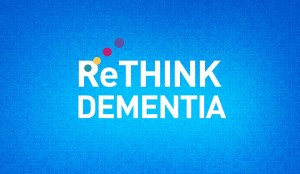Posts
Press Release~There is Such a Thing as Being Too Thin…
FOR IMMEDIATE RELEASE Contact: Irina Strembitsky & Orchard Senior Living
Phone: (404) 775-0488
Email: marketing@orchardseniorliving.com
Press Release
There is Such a Thing as Being Too Thin…
Improved nutrition outcomes are within reach for those living with dementia and other chronic illnesses.
Tucker, Georgia, April 2nd, 2018- After a year of research, testing and development, Orchard Senior Living is prepared to unveil our custom created Nutrition Therapy Program specifically designed for those with dementia, as well as other chronic illnesses that often lead to malnutrition or undernutrition. We developed this program because the current nutrition therapy options available have failed our residents as well as many others in the community.
A popular saying says, “We are what we eat.” A good diet is vital to everyone’s health, well-being, and quality of life. A person needs carbohydrates, protein, fat, fiber, minerals, vitamins, electrolytes, and water to survive. Obtaining the correct balance and quantities of these nutrients is essential. Insufficient nutrition and hydration can lead to deterioration of overall health, including mental health, as well as weight loss, dehydration, dizziness, increased risk of falls, prolonged recovery after surgery, change of mood, frequent colds, reduced strength, reduced mobility, reduced communication abilities, difficulty keeping warm, infections, as well as prolonged healing. Cognitive deficits such as Dementia, have a direct effect on a person’s nutrition. Malnutrition or undernutrition may occur at any stage of dementia. It is important to detect it and try to remedy this as early as possible.
Did you know? Up to 45 per cent of people living with dementia experience clinically significant weight loss over one year, and up to half of people with moderate or severe dementia have an inadequate food and nutritional intake. Some experience very quick weight loss, dropping to a withering 70-90 lbs. in a span of several months. As dementia advances, it’s difficult to ensure that those living with dementia are eating and drinking enough. These challenges increase the risk for malnutrition and can worsen other health conditions a person may already have. There are numerous reasons for poor appetite to develop, including depression, communication problems, sensory impairments, change in taste and smell, pain, tiredness, medication side effects, physical inactivity, and constipation. Some people with dementia may lose their ability to concentrate, so they become distracted while eating and stop eating as a result. Other people may have trouble using utensils or raising a glass. It may also be challenging to bring the food from the plate to their mouth. Some people may need to be reminded to open their mouth to put food in it or even to chew. Another common problem in more severe dementia cases is dysphagia, which is difficulty swallowing. Dysphagia can lead to weight loss, malnutrition, or dehydration. Over time you may find that your loved one’s appetite declines or the taste of food doesn’t appeal to them. Sensory changes in sight and smell can impact their ability to enjoy food and mealtimes. Their likes and dislikes for food and drink may be quite dramatic and different from the ones they held for many years. They may also find it difficult to tell you what they want to eat.
Dementia and Alzheimer’s Disease are not the only chronic conditions that can cause malnutrition or undernutrition. Other chronic conditions can often impact a person’s nutrition. Many illnesses cause what is called disease-related malnutrition. Many people living with Parkinson’s disease, suffer from muscle weakness or tremors, which can make eating very challenging. Other diseases that often cause nutrition deficiencies are cancer, liver disease, COPD, and CHF to name a few.
In many of these cases, the malnutrition and undernutrition are severe and all conventional methods have failed. Orchard’s state of the art Nutrition Therapy Program offers hope for this group, a group that has not responded to traditional nutrition methods. Orchard has partnered with Gordon Foods and their team of experts and dieticians, as well as with dementia specialists to bring this revolutionary nutrition therapy to the community.
Join us on April 12th from 4 pm-6 pm as we unveil our Nutrition Therapy Program to area professionals who are interested in helping our community battle this difficult problem. Event attendees will be able to taste a variety of nutrition therapy options such as Cake a Boo, Sherberita, and Strawberry Smash. This event will be held at Orchard at Tucker, 2060 Idlewood Rd, Tucker GA 30084. For questions or to RSVP for the event please email marketing@orchardseniorliving.com.
Dementia, I Will Give You My Memory, If You Leave Me My Personality
What Does Dementia Mean to the Average Person?
Dementia is a general decline in cognitive ability severe enough to interfere with daily life. Memory loss is one example. Dementia is not a specific disease. Dementia is a term that describes a wide range of symptoms associated with a decline in memory and other thinking skills severe enough to reduce a person’s ability to perform everyday activities. People with dementia often have problems with short-term memory recall, keeping track of a wallet or other possessions, paying bills, planning and preparing meals, remembering appointments or traveling out of the neighborhood. Dementia is progressive, as symptoms start out slowly and gradually get worse. As Dementia progresses, individuals notice increased memory loss, mental decline, confusion especially in the evening hours, disorientation, inability to speak or understand language, making things up, mental confusion, or inability to recognize common things.
What Does Dementia Mean to Those of Us Who See it Every Day?
Although the above examples of dementia symptoms are true, and do indeed interfere with a person’s everyday life, they are not a full picture of dementia symptoms. When dementia steals memory, language, thinking and reasoning, these new deficits are referred to as “cognitive deficits” of the disease. The term “behavioral and psychiatric symptoms” describes a large group of additional, and in my opinion most devastating, symptoms that occur to at least some degree in many individuals with dementia. In early stages of dementia, many experience personality changes such as irritability, apathy, anxiety or depression. In later stages, many experience sleep disturbances, mixing up their days and nights, agitation such as physical or verbal outbursts, combativeness, combativeness while getting care, refusal to get care, general emotional distress, restlessness, continuous pacing, shredding paper or tissues, yelling for no apparent reasons, delusions, paranoia, misperceptions, or hallucinations.
Real Life Example of a Behavioral Change.
Linda is 87 in the moderate stage of dementia. She retired as a Vice President of a company. Her family told me that she was known for her business acumen and immaculate appearance. Her outfits were always perfectly put together, her makeup and hair flawless. Today, due to the dementia, it is a struggle to get Linda to take a shower, comb her hair, or get any grooming what so ever. She refuses to wear makeup and will very rarely agree to get her hair done. She refuses manicures and pedicures that she used to get weekly for over 40 years. It is extremely painful for her family to watch Linda, who was always so well put together, now refuse to get her hair done, and be combative when any grooming is attempted. Unfortunately, this type of a personality change is common to those with dementia. Dementia has stripped Linda of her desire to look nice and be well groomed. In a year’s time, dementia has changed grooming habits Linda had for over 40 years.
Real Life Example #2
Lynn is 84 in the moderate stage of dementia. She worked as party planner before she retired. She was always very social and the life of the party. Lynn remained social into the mild stages of dementia. During the tail end of the mild stage, Lynn was still social, however when she would be around others they would ask her questions about her family and herself that she had trouble answering due to her dementia. Each time Lynn was not able to answer a question, she would leave the social or the event immediately. Shortly after, Lynn refused to participate in any of the hobbies and socials she enjoyed her whole life. This is another common example of dementia changing a person’s personality, and converting a social butterfly into a reclusive butterfly.
Lynn was reclusive and isolated for several months. Finally, her family decided to move her to the Orchard at Tucker, a community that specializes in cognitive care and engagement for those with cognitive deficits. Lynn’s family provided the Orchard with a detailed profile as well as her history and the Orchard engagement team came up with a detailed plan to combat Lynn’s new reclusive personality. The engagement team took all the information they were given, and they were able to create an Enabling Environment for Lynn. To learn more about enabling an environment see http://stage-osl.daveminotti.com/creating-an-enabling-environment-is-key-to-providing-dementia-care/)
With the creation of a new enabling environment, Lynn slowly started to participate in some activities. Although the Orchard engagement team did several things to modify her environment, one such modification was surrounding Lynn with other residents that were on her cognitive level. They also made sure that all team members were aware of Lynn’s history and her strong desire to mask her dementia. When everyone was aware of Lynn’s dementia, and the other resident around her also had dementia, no one asked Lynn any difficult questions, and her dementia never stood out to others. This one environmental change alone led to Lynn participating in activities daily, although never to the extent she used to participate prior to the dementia. Environmental modifications are very helpful, but they can never make up for all the damage caused by dementia. In Lynn’s case, her personality change could have been minimized if an enabling environment was created sooner. I believe Lynn’s personality change was so significant, so quickly, at least in part due to Lynn losing her self-esteem by not being able to answer the questions asked, and her struggle to hide her dementia from those that were noticing. This is a prime example of a personality change that dementia caused, that could have been lessened by an earlier intervention.
The Take Away..
I have spoken with so many loved ones of those with dementia, and they have all agreed, that the behavioral changes caused by Dementia that are hardest on their loved one, as well as the entire family. Losing your memory is nothing compared to becoming a different person. Also, it is the behavioral changes caused by dementia that impact one’s life, much more negatively than memory loss. It is much easier to compensate for a person’s memory loss than to compensate for extreme anxiety, paranoia, combativeness, or refusal to get care. These behavior symptoms are rarely talked about. When you ask the average person what dementia means, they will say dementia causes memory loss. Most people do not realize how many other terribly negative symptoms are caused by dementia. They don’t realize that if dementia just caused memory loss, most people with dementia would have a much better quality of life. Most people don’t understand the devastation dementia causes. Dementia causes comprehensive memory loss, not just memory loss of what happened yesterday, or what time it is, but in many cases the loss of one’s personality. Very rarely are the personality changes positive. Almost always these behavioral personality changes negatively impact a person’s quality of life. These changes often create a completely different person, often unrecognizable to friends and family. As dementia progresses, these changes happen quickly and become more and more noticeable. It is important to understand that they are still the same person inside. They have not changed on the inside, the way they now communicate with the outside world has changed. Dementia causes a person to have a battle, both internal and external, a battle for who they were, and how they were ones perceived.
Creating an Enabling Environment is Key to Providing Dementia Care
How does Dementia effect a person’s ability to enjoy their hobbies and participate in activities?
Nutrition Therapy at Each Level of Dementia Care
 What is a common challenge for those with Dementia?
What is a common challenge for those with Dementia?
Challenges at mealtime are extremely common for those with dementia. These mealtime challenges will change as dementia progresses. There are distinct and separate challenges that are associated with early, middle and late stage dementia.
What are the common mealtime challenges for those in the Early Stage of Dementia?
- Forgetfulness
- Loss of concentration
- Changes in food preferences
- Reporting that foods taste bland (foods previously enjoyed)
- No longer enjoying favorite restaurants
- Unable to hold attention through a meal
- Distracted by the environment at mealtime
What are the common mealtime challenges for those in the Moderate Stage of Dementia?
- Confusion and unawareness of surroundings, place and time
- Appetite increase and weight gain
- Decreased appetite and weight loss
- Failure to understand proper use of utensils
- Refusal to sit during meal times- pacing, wandering
- Increased difficulty with word finding and decision making
- Unable to recognize food temperatures
- Unable to see food as food (may think food is poisoned)
- Unable to recognize food items once liked
- Hiding of food
What are the common mealtime challenges for those in the Severe Stage of Dementia?
- Preference for liquids over solids, due to appetite change or lack of swallowing ability
- Aggressive or combative behaviors during a meal

- Clenches jaw, or closed fist when attempting to feed or be fed
- Refusal to eat due to unknown reasons (variety reasons could be at play)
- Inability to self feed, not being used to being fed
- Swallowing impairments ranging from mild to severe
- Weight loss despite regular caloric intake (can also be due to increase activity due to increased anxiety)
What are some important tips for a creating a dining environment for those with Dementia?
- Tableware contrast ( avoid white plates on white linens)
- Too many utensils
- Avoid high gloss floors
- Natural light is best
- Avoid a distracting dining environment with too many items on the table
- Make sure the table and chair is sturdy, and of the right height
- Simplified dining room is best
- All food served at once is usually best (although there are some exceptions)
- Offer finger foods (avoid finger food that are too intricate or rare)
What if the above tips do not work?
If the above tips do not help with the challenges presented at mealtime, your team needs to take further steps to make sure that nutritional needs are met and your resident with Dementia is getting adequate caloric intake and the necessary nutrition.
The first thing your team needs to do is to do a full assessment of each person’s unique situation and determine the specific deficiencies caused by the mealtime challenges. During the assessment your team must set goals and prioritize the deficiencies, identify resources needed based on the severity of a person’s challenges. Your team needs to also identify possible behavioral and nutrition interventions such as a change of dining environment. Finally your team should specify the time and frequency of the intervention.
What’s Next?
Please check back soon for Part II of this article
Elevated Emotions Even Without Memory while Living with Dementia
Which last longer for those with Dementia or Alzheimer’s Disease? Memories or Emotion?
Have you seen long lasting emotions in a loved one with Dementia or Alzheimer’s after the memory causing the feelings have faded? I have on many occasions. Although I have seen it live on so many occasions, there is now science behind it. It’s no surprise that people with Alzheimer’ s have trouble recalling memories. It is, after all, the hallmark symptom of the disease. However, a new study has found that events can have a longer term and profound effect on how they feel even if they do not remember the particular event.
s have trouble recalling memories. It is, after all, the hallmark symptom of the disease. However, a new study has found that events can have a longer term and profound effect on how they feel even if they do not remember the particular event.
The Study..
A new University of Iowa study further supports an inescapable message: caregivers have a profound influence—good or bad—on the emotional state of individuals with Alzheimer’s disease. They may not remember a recent visit by a loved one or having been neglected by a loved one, but those actions can have a lasting impact on how they feel. University of Iowa researchers also showed individuals with Alzheimer’s disease clips of sad and happy movies. The patients experienced sustained states of sadness and happiness despite not being able to remember the movies.
The Emotional Life of those with Dementia and Alzheimer’s Disease….
These studies confirm that the emotional life of those with dementia and Alzheimer’s disease last far beyond the tangible memory of an event, regardless if the event was good or bad. “This confirms that the emotional life of an Alzheimer’s patient is alive and well,” says lead author Edmarie Guzmán-Vélez, a doctoral student in clinical psychology, a Dean’s Graduate Research Fellow, and a National Science Foundation Graduate Research Fellow.
The Take Away…
Despite the considerable amount of research aimed at finding new treatments for Alzheimer’s, no drug has succeeded at either preventing or substantially influencing the disease’s progression. Against this foreboding backdrop, the results of this study highlight the need to implement new care giving techniques and care models aimed at improving the well-being and minimizing the suffering for the millions of individuals afflicted with Alzheimer’s. These studies prove that traditional thinking about the emotional life of someone with Dementia and Alzheimer’s Disease is lacking immensely. Traditional thinking still tries to convince people that if they don’t remember it does not matter. At the Orchard at Tucker, we feel it Not Only Matters, but it Matters More. Although these studies are wonderful, we see the importance of emotion based care each and everyday by watching our residents.
The Subtle Signs of Swallowing Problems for Those with Dementia and Other Diseases
How does swallowing actually occur?
The oral phase of swallowing requires a complex interplay of chewing, food bolus formation, and push of the bolus to the back of the throat for the process of swallowing and movement to the esophagus and stomach. Multiple facial and oral muscles, such as the tongue, are responsible for this phase. Once the food bolus is to the back of the throat a series of muscular contractions occur to move the bolus into the esophagus and away from the airway. The airway is temporarily closed as the food bolus is pushed past the tracheal opening and into the esophagus. The food bolus then makes its way to the stomach through another series of coordinated muscular contractions within the esophagus.
Sounds Complicated Right? It is and lots can go wrong..
Due to the complexity of the swallow mechanism, a multitude of problems that can arise. The most common cause of oral dysphagia (swallowing trouble) is stroke, with up to 45 percent of stroke patients develop swallowing problems following the stroke. Other neurological diseases such as Parkinson’s disease, Multiple Sclerosis, Dementia, and Alzheimer’s disease are known to cause swallowing difficulties. Lesions, re flux conditions, and cancer have also caused swallowing troubles but to a lesser extent.
There are obvious and less obvious signs of swallowing difficulties…
Everyone knows that if a person coughs up food or gags while eating, they likely have swallowing troubles. However there are other more subtle signs that can go easily unnoticed such as long breaks between bites, being horse, drooling, frequent heartburn, and acid re-flux.
What can happen if these subtle signs are ignored?
If subtle signs are ignored they can result in choking, where food partially or fully obstructs a person’s airway, aspiration or inhalation of food or liquids, oral secretions or gastric secretions into the airway and lungs. Also gastric secretions may be inhaled without bacteria causing aspiration pneumonia. A person may aspirate not only food or fluids that are introduced into the mouth but also their own saliva or any gastric secretions, which may be re-fluxed into the airway.
What can be done?
In a community setting, all care partners must be trained to carefully observe each resident for not blatant signs such as chocking, but for the subtle signs such as drooling, and long pauses and usually get confused for something other than swallowing challenges. When a person lives alone, the signs of swallowing trouble usually go ignored until they end up in the hospital. In many setting, little attention is paid to dining room observation. Orchard at Tucker understands the importance of monitoring these subtle symptoms and finding the problem while it is minor, and before it causes a resident irreversible harm.
and before it causes a resident irreversible harm.
Nutrition Assessment is a Part of Dementia & Alzheimer’s Care
Determining if your loved one needs additional nutrition care or nutrition therapy starts with a nutrition assessment.
What is Nutrition Assessment?
Nutrition assessment is a process that nutritionist or dietitian uses to evaluate your nutrition level and determining your current nutrition needs. Your nutrition level ranges from great to extremely deficient. The first step is to determine your individual nutrition needs for optimal health. This step includes knowing a thorough history of your diet, lifestyle, medical, chronic conditions. The second step is the evaluation of your nutrition status, calorie, protein and nutrient needs, adequacy of your diet, possible deficiencies or food intolerance(s), need for further testing, recommendations for diet and lifestyle changes and supplements.
Your Nutrition Assessment looks at all these areas:
- Diet history
- History of Weight Loss
- Recent illnesses or Diagnosis

- Lifestyle history
- Medical history (such as Dementia or Alzheimer’s)
- Evaluation of blood and diagnostic tests
- Recommendations for testing (testing for allergies, for vitamin deficiencies)
- Evaluation of nutrition status (how serious is the deficiency)
- Calorie needs (based on height, weight, activity level, sex)
- Protein needs
- Nutrient needs
- Adequacy of your diet
- Possible diet deficiencies
- Food intolerance
The Takeaway…
Identifying malnutrition is an important first step in identifying a problem. Eating and enjoying a meal is part of our everyday life and important to everybody, not least to people living with dementia. A healthy diet and nutrition is fundamental to well being at any stage of life and to helping to combat other life-threatening diseases. Under nutrition is common among older people generally, particularly common among people with dementia. Under nutrition tends to be progressive, with weight loss often preceding the onset of dementia and then increasing in pace as the disease progresses. Although we can’t avoid these symptoms which lead to malnutrition and under nutrition, we can manage them with a variety of Nutrition Therapy Options. Orchard at Tucker’s 2018 Nutrition Therapy Program is designed to help combat under nutrition and bring back the joy of eating to those who have lost it. However it all starts with an nutrition assessment.




